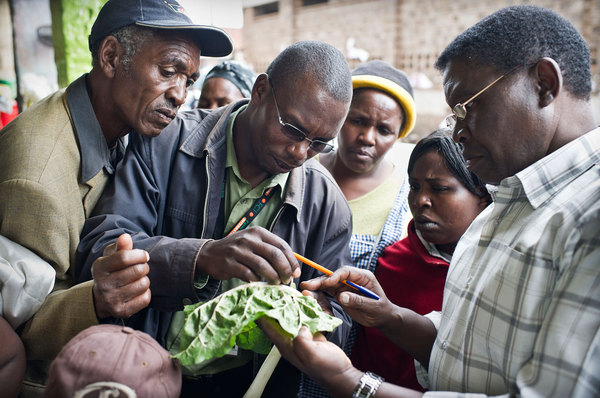Fostering knowledge and confidence to feed more
Globally, an estimated 815 million people go hungry each day. Without access to healthy food, they are chronically undernourished. Meanwhile, in spite of advances in agricultural technology, approximately 40% of the food grown annually in rural communities is lost to pests and diseases. People living with persistent hunger need and deserve a sustainable solution based…
Yellow Dragon Disease: An Increasing Threat to Global Citrus Production
Yellow dragon disease, also known as citrus greening disease is one of the greatest bacterial threats to citrus trees on a global scale, affecting crop production across Africa, Asia and North America.
From satellites to stem borers: using earth observation to forecast pest outbreaks
Globally, over 500 million smallholder farmers provide food for two thirds of the world’s population. With 40% of crops lost annually to pests, achieving zero hunger by 2030 depends on increasing the productivity of these smallholders. We already have weather forecasts, pollen forecasts and UV forecasts, but what if farmers had access to pest forecasts?
Update: New Pest & Disease Records (16 May 18)
We’ve selected a few of the latest new geographic, host and species records for plant pests and diseases from CAB Abstracts. Records this fortnight include the first report of plum pox virus (PPV) in Japan, the first report of white blister rust disease caused by Albugo occidentalis on spinach in Turkey and the first report…
CABI signs MoU with Agricultural Department Gilgit Baltistan to launch Plantwise programme
CABI has signed a Memorandum of Understanding (MoU) with Agriculture Department Gilgit Baltistan in Pakistan to launch the Plantwise programme in order to provide research-based advisory services to farmers. The agreement, which will deliver Plantwise plant clinic services, was signed by Dr Babar Bajwa, Regional Director – CABI Central and West Asia, and Mr Sajjad Haider…
Farmers Need Long-Term and Short-Term Solutions to Combat Fall Armyworm in Kenya
Reblogged from Farming First. From a distance, Wycliffe Ngoda’s two acres of shiny green maize crops look healthy and lush. But the tell-tale holes in the leaves and debris on the stems give away an increasingly dangerous secret hidden in more and more maize fields across Kenya and sub-Saharan Africa. The rampant Fall Armyworm caterpillar is…
EU ban on bee-killing insecticides
The world’s most widely used group of insecticides will be banned from all fields within the next six months by the European Union. The use of neonicotinoids will be prevented in any manner with the aim of protecting important insect pollinators such as honeybees which are known to be vital for global crop pollination.
Students learn Integrated Pest Management techniques in Beijing
CABI has held a five-day course on Integrated Pest Management (IPM) to train post graduate students and young researchers on a range of pest management techniques including how to keep pests, diseases and weeds below levels that cause economic damage.
Drought Resistance Hormone Discovered in Plants
Researchers at the RIKEN Centre of Sustainable Resource Science (CSRS) in Japan have discovered a hormone linked to the stimulation of drought-resistant characteristics in plants. Published in the journal Nature earlier this month, the study shows how the peptide CLE25 is synthesised in the roots of plants when under stress due to a lack of…
Nuclear Development in Zambia: A Positive for Environmental Protection?
The agriculture sector in Zambia employs around half of the country’s labour force and provides the largest source of employment opportunities for rural women. However, although the sector contributes 6.5% GDP and 9.6% of the national export earnings, the industry is one of the most under-developed in the country.




